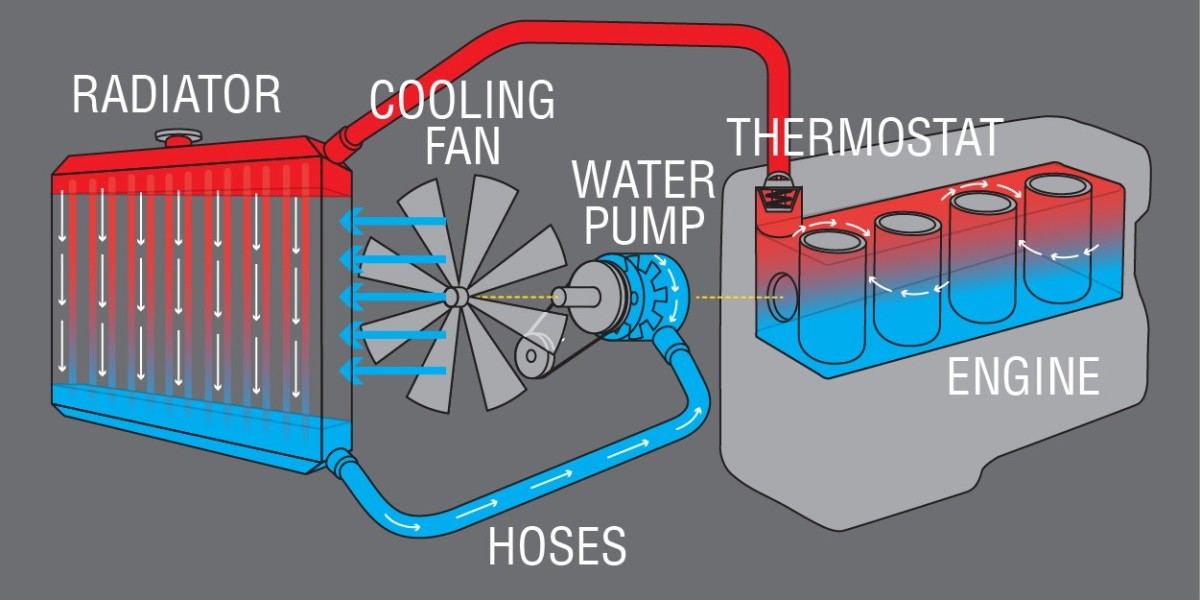Automotive Engine Cooling System: Essential Components and Functionality
The engine cooling system is a critical component of any vehicle, ensuring optimal performance and longevity of the engine. It prevents overheating, maintains the engine at the correct operating temperature, and enhances efficiency. This article explores the key components of the automotive engine cooling system, its functions, types, and maintenance practices.
Importance of Engine Cooling Systems
An engine generates a significant amount of heat during operation due to fuel combustion. If this heat is not effectively managed, it can lead to severe damage, including warped cylinder heads, blown gaskets, and ultimately engine failure. The cooling system is designed to:
- Regulate Temperature: Maintain the engine at an optimal temperature for efficient performance.
- Prevent Overheating: Protect the engine from excessive heat that can cause damage.
- Enhance Efficiency: Improve fuel efficiency by maintaining ideal operating conditions.
- Reduce Emissions: Help in reducing harmful emissions by ensuring complete combustion.
Key Components of the Engine Cooling System
Radiator
The radiator is a heat exchanger that dissipates heat from the engine coolant to the atmosphere. It consists of a series of tubes and fins that maximize surface area for effective cooling. Coolant flows through the radiator, where it is cooled by air passing through the grille.Coolant
Coolant (or antifreeze) is a mixture of water and chemicals that circulates through the engine and radiator. It absorbs heat from the engine and releases it through the radiator. The coolant also prevents freezing and boiling, protecting the engine in extreme temperatures.Water Pump
The water pump is responsible for circulating coolant throughout the engine and radiator. It ensures that coolant flows efficiently, maintaining the proper temperature balance. Most modern vehicles use a belt-driven water pump, but electric pumps are becoming more common.Thermostat
The thermostat regulates the flow of coolant based on the engine temperature. It remains closed when the engine is cold, allowing it to warm up quickly. Once the engine reaches the optimal temperature, the thermostat opens, allowing coolant to flow to the radiator.Cooling Fans
Cooling fans help draw air through the radiator when the vehicle is stationary or moving slowly. They can be mechanically or electrically operated, and they activate when the engine temperature rises above a certain threshold.Hoses
Various hoses connect the components of the cooling system, allowing coolant to flow between the engine, radiator, and other parts. These hoses must be durable and resistant to heat and pressure.Expansion Tank
The expansion tank (or overflow tank) accommodates the expansion of coolant as it heats up. It also allows for the recovery of coolant as it cools down, maintaining the proper level in the system.
Types of Engine Cooling Systems
Liquid Cooling System
Most modern vehicles use liquid cooling systems, which circulate coolant through the engine and radiator. This system is efficient and effective at managing engine temperatures.Air Cooling System
Air-cooled engines rely on air to dissipate heat. These systems are typically found in older vehicles and some motorcycles. They use fins and fans to enhance airflow around the engine.Hybrid Cooling Systems
Some vehicles, particularly hybrids and electric vehicles, may use a combination of liquid and air cooling systems to manage temperatures for both the engine and battery packs.
Maintenance of the Engine Cooling System
Proper maintenance of the engine cooling system is essential for optimal performance and longevity. Here are some key practices:
- Regular Coolant Checks: Periodically check the coolant level and condition. Replace coolant according to the manufacturer’s recommendations.
- Inspect Hoses and Connections: Look for signs of wear, cracks, or leaks in hoses and connections. Replace any damaged components promptly.
- Radiator Maintenance: Ensure the radiator is clean and free of debris. Flushing the radiator periodically can help remove sediment and buildup.
- Thermostat Functionality: Test the thermostat to ensure it opens and closes at the correct temperatures.
- Monitor Temperature Gauges: Keep an eye on the engine temperature gauge while driving. If it consistently runs hot, investigate potential issues.
The automotive engine cooling system is vital for maintaining optimal engine performance and longevity. Understanding its components and functionality helps vehicle owners appreciate the importance of regular maintenance. By ensuring that the cooling system operates efficiently, drivers can prevent overheating, enhance fuel efficiency, and extend the life of their engines. As technology continues to advance, innovations in cooling systems will likely emerge, further improving the reliability and efficiency of modern vehicles.







